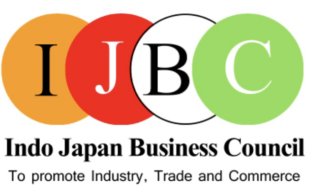In a bold move, Apple is ramping up iPhone production in India, with CEO Tim Cook announcing that most iPhones sold in the U.S. during the June 2025 quarter will be made in India. This shift marks a significant change in Apple’s supply chain strategy, driven by rising U.S.-China trade tensions and hefty tariffs. As Apple navigates these challenges, India is emerging as a key player in both manufacturing and sales for the tech giant.
During Apple’s recent earnings call, Cook shared, “For the June quarter, we do expect the majority of iPhones sold in the U.S. will have India as their country of origin.” While he didn’t predict long-term production trends, his statement highlights Apple’s push to diversify its manufacturing base away from China, where tariffs on goods shipped to the U.S. have soared to at least 145%. The Trump administration’s new wave of tariffs, imposed on over 100 countries in April 2025, has further complicated things. Although most countries received a 90-day pause to negotiate, China wasn’t included, prompting Apple to rethink its global manufacturing approach.
For now, Apple continues to produce most iPhones for non-U.S. markets in China. However, the U.S.—Apple’s biggest market—is seeing a clear pivot to India. India offers lower tariffs and a growing manufacturing ecosystem, making it a cost-effective alternative. Major Apple suppliers like Foxconn and Tata are scaling up assembly lines in India, using component sets shipped from China. According to a JPMorgan analysis, an iPhone assembled in India costs $1,008, slightly more than the $938 for one made in China. Still, this is far cheaper than the 30% cost increase Apple would face if it moved production to the U.S.
Apple’s shift isn’t just about dodging tariffs. India is becoming a vital market for the company. In 2024, Apple crossed a major milestone, exporting iPhones worth $12.8 billion (Rs 1.08 lakh crore) from India. The company’s sales in India have also surged, especially after opening its first retail stores in Mumbai and New Delhi. Apple plans to open more stores by the end of 2025, signaling its commitment to the region. Reports also suggest that India may soon sign a bilateral tariff agreement with the U.S., which could make Apple’s operations even smoother.
Despite the challenges, Apple is managing costs effectively. Cook noted that the company optimized its supply chain in the March 2025 quarter, softening the impact of tariffs. However, he cautioned that tariffs could add up to $900 million in costs for the June quarter. Looking ahead, Apple’s ambitions are big—The Financial Times reported that the company aims to assemble all iPhones sold in the U.S. in India by 2026. Achieving this would require doubling India’s production capacity, a goal Apple is actively pursuing.
Financially, Apple is holding strong. For the March 2025 quarter, the company reported $95.4 billion in revenue, up from $90.75 billion the previous year. iPhone sales contributed $46.84 billion, with Mac and iPad sales adding $7.95 billion and $6.4 billion, respectively. Cook expects revenue to grow in the low to mid-single digits for the June quarter, despite the tariff-related uncertainties.
Apple’s pivot to India reflects a broader trend of companies rethinking global supply chains amid geopolitical shifts. For U.S. consumers, the change may go unnoticed, as iPhones will still deliver the same quality and innovation. But behind the scenes, India’s rise as a manufacturing and sales hub is reshaping Apple’s future.
FAQs
- Why is Apple moving iPhone production to India?
Apple is shifting production to India to avoid high U.S. tariffs on goods from China, which have reached at least 145%. India offers lower tariffs and a growing manufacturing base, making it a cost-effective alternative. - Will iPhones made in India be more expensive?
iPhones assembled in India cost slightly more ($1,008 vs. $938 for China-made ones), but the difference is small compared to the higher costs of producing in the U.S. or paying China’s tariffs.













